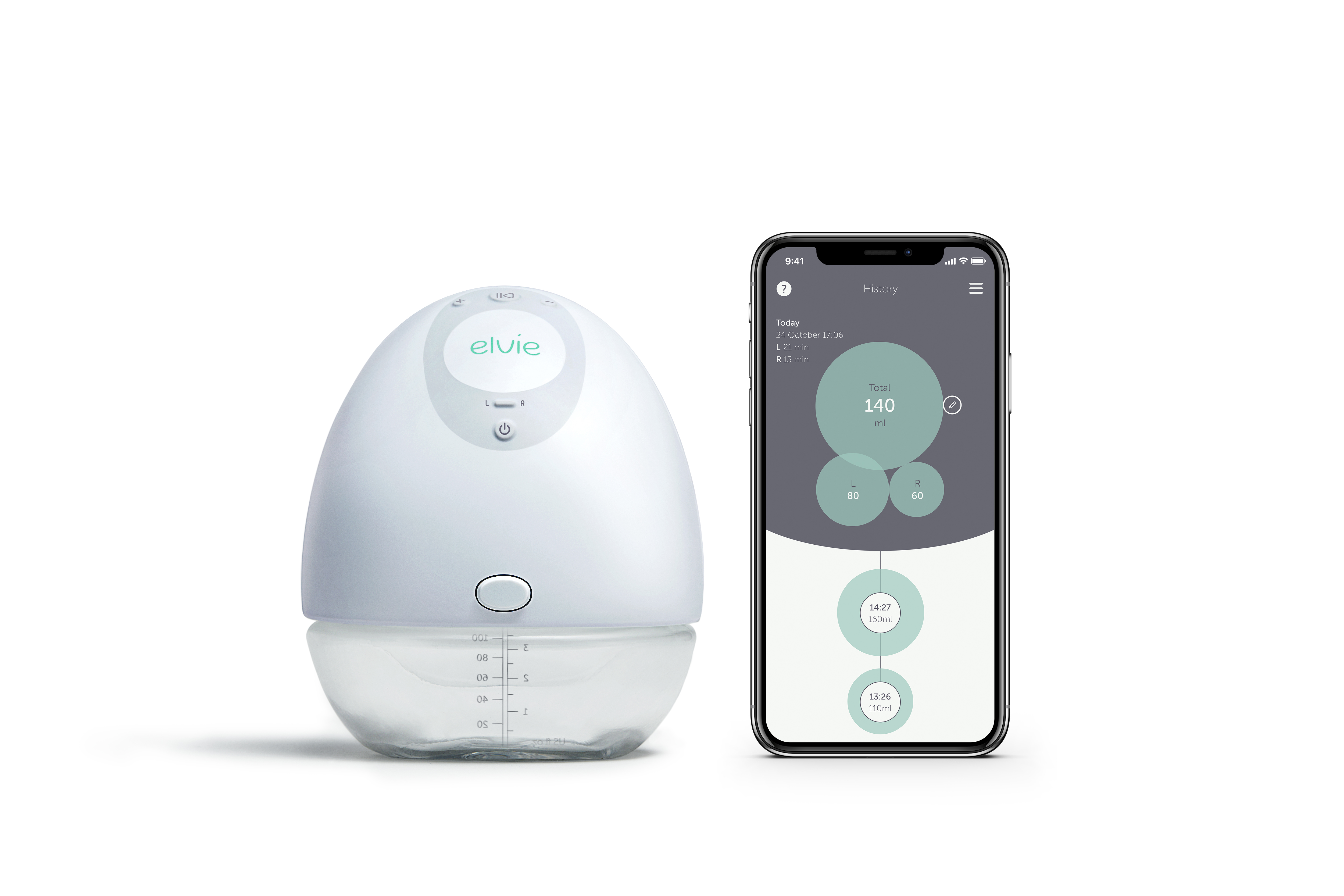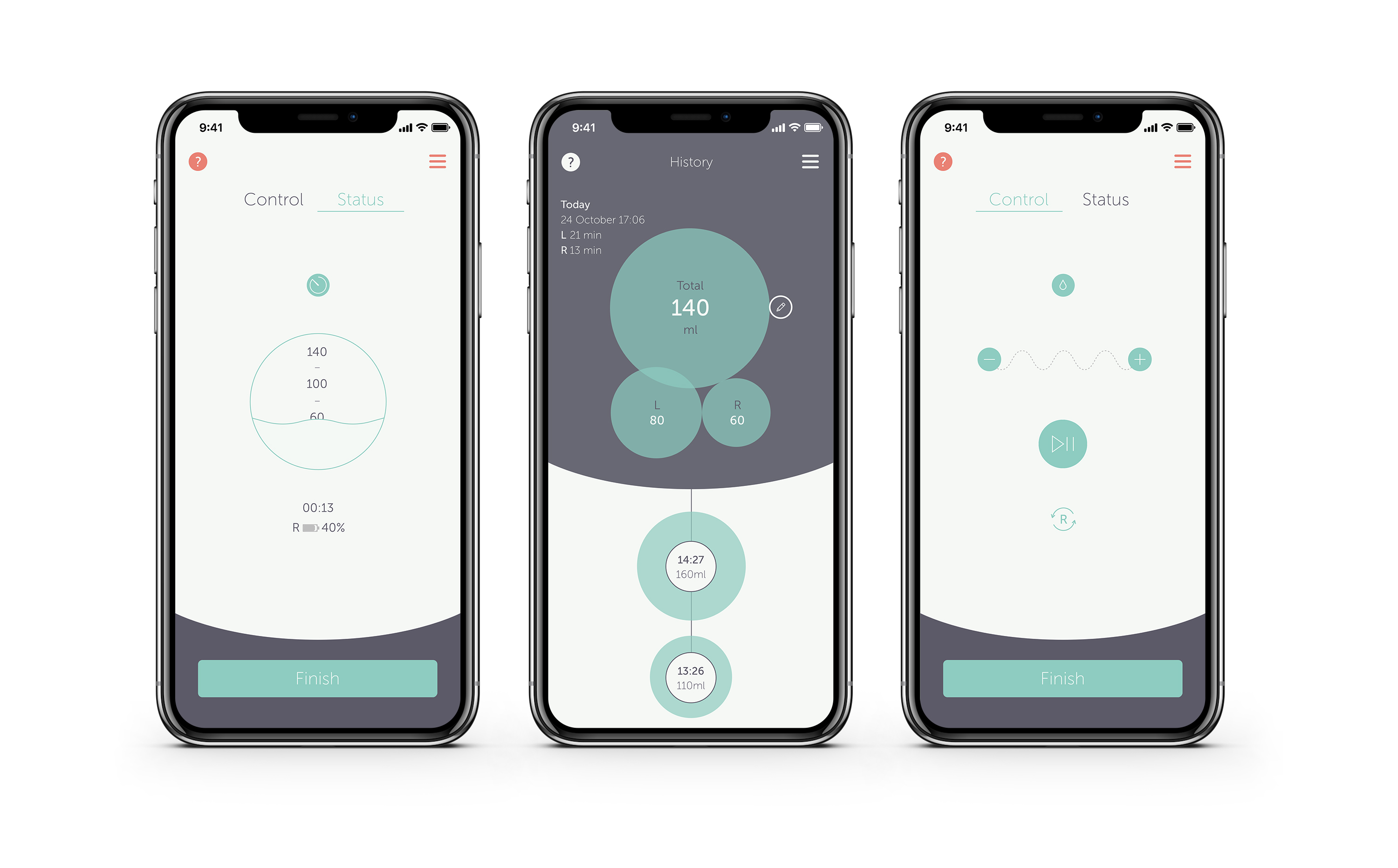Music
Trailers
DailyVideos
India
Pakistan
Afghanistan
Bangladesh
Srilanka
Nepal
Thailand
StockMarket
Business
Technology
Startup
Trending Videos
Coupons
Football
Search
Download App in Playstore
Download App
Best Collections
Technology
Itbeen too long without any kind of outlandish news from any of Elon Musk companies, but SpaceX has filled the void with the announcement of a newly redesigned BFR spacecraft and the news that it will fly around the moon with a soon-to-be-named first passenger. Whenever they get around to actually engineering and building the thing, anyway.
In a tweet Thursday evening, SpaceX (though it was clearly Musk) announced that it has &signed the worldfirst private passenger to fly around the Moon aboard our BFR launch vehicle.&
Attached to the tweet was an image of the BFR itself (above), much changed from its last appearance. It used to look like this:
 And now it looks like this:
And now it looks like this:
 The old version was also two-toned, as you can see if you look closely at the ISS render, with the darker part likely corresponding to a heat-resistant surface. But this new one is more reminiscent of the Space Shuttle thanks to considerably lengthened fins and the addition of a top one. Perhaps the cool, smooth two-fin style simply proved impractical; flight stability in atmosphere probably makes that top fin necessary. Therealso what appears to be a front stabilizer of some kind.
The old version was also two-toned, as you can see if you look closely at the ISS render, with the darker part likely corresponding to a heat-resistant surface. But this new one is more reminiscent of the Space Shuttle thanks to considerably lengthened fins and the addition of a top one. Perhaps the cool, smooth two-fin style simply proved impractical; flight stability in atmosphere probably makes that top fin necessary. Therealso what appears to be a front stabilizer of some kind.
The engine cluster is also different; the original design had 4 Raptor engines in a square, with two smaller &sea-level& engines for landing operations in-between them. This new render has 7 Raptors in a honeycomb formation. We can only speculate why that might be: the engines may have been scaled down a bit for some reason or another, or the 7-thruster formation might be more robust to failures.
Since this is all basically concept work, ithard to say how much is real and how much is fantasy. Considering how early the craft is in production, itnot surprising that major changes like these would be made.
A commentator on Twitter noted that the whole thing is very &Tintin-esque,& no doubt referring to the rocket flown by the beloved Belgian comic book hero in &Destination Moon& and &Explorers on the Moon.&

Although Musk responded with &Intentionally so,& the similarities are actually pretty few. Perhaps he meant the whole concept of a private lunar mission. At any rate, Musk is clearly a fan of the comics, and any Tintin reference is a good reference.
There are also 6 rows of windows behind the cockpit, up from 3, suggesting SpaceX has expanded the seating in the planned craft. That fits with the passenger-related nature of the announcement.
As for that: This first circumlunar tourist will be announced at an event on Monday, September 17th. Who will it be Likely a billionaire. Unfortunately, they&ll have a long time to wait. By the time the BFR is up and running, space tourism (though perhaps not round-the-moon trips) may very well have been going on for years. So if it will be this intrepid, extremely rich personfirst trip to our satellite, I doubt it will be their first trip above the Kármán line.
- Details
- Category: Technology
Chime, the no-fees mobile bank valued at $500 million as of its last round, has put some of its funds to use with its first acquisition. The deal is for Pinch, a startup that was focused on helping millennials and other young adults build better credit. It was best known for a service called PinchRent, which allowed users to increase their credit scores over time by reporting on-time rent payments to credit bureaus.
Millennials can sometimes struggle to improve their credit, or are uneducated about what their credit scores mean, studies have shown. And like any younger demographic, they may also be afflicted with shorter credit histories, which impacts those scores, too.
Many in this age group have said that their low credit scores are holding them back, and millennials prefer debit to credit, Visa has reported.
Pinchfocus was to provide a different way for its users to increase their scores, rather than simply using credit cards or making loan payments on time.
It did this by aggregating the information on rent payments and submitting that to the credit bureaus. (The bureaus can take rental information, but they don&t work with individual landlords. Thatwhere Pinch came in.)
Since its founding in 2016, more than 80% of people on its service increased their scores from 10 to 100 points.
The startup was preparing to announce a $1.8 million seed round of funding from Homebrew and Collaborative ahead of its acquisition.
Pinch had only been in beta testing prior to joining Chime, and was also planning to do a full public launch. Instead, it shut down its service by alerting users via email that its last day of business would be June 27, 2018.
At the time of the serviceclosure, it was in talks with Chime. But the deal itself only closed this Tuesday, we understand.
Chime declined to share the deal terms, but noted itan all-stock transaction and investors were happy.
The acquisition includes Pinchcore team (5-10 people, depending on how the offers play out) plus foundersMaia Bittner and Michael Ducker, who will now help the mobile bank launch credit and lending products over the next six months.
Bittner previously co-founded subscription startup Rocksbox, and worked as a Sequoia Capital scout. Ducker, meanwhile, hailed from Microsoft and Twitter before starting Pinch.
Chime, whose user base is 90% millennials, may or may not relaunch Pinchrent-paying service, but it will be soon moving into credit.
&I think, particularly, post the 2008 crisis, therebeen just a general distrust of big banks. But also, people have seen how the amount of credit [they have] can create challenges in their life,& says Chime CEOChris Britt, discussing the struggles its users face in terms of building their credit.
&And younger consumers are so saddled with with student loan debt that the last thing they want to do is get more debt on a credit card,& he adds, explaining why young people turn to debit cards.
He says Chimegoal now is to helping serve this groupneeds around credit with a set of millennial-focused products.
&The reality is the typical debit card and checking account do nothing to build your credit score. So as we think about the future set of products that we want to roll out, we&re very focused on helping our members with that part of their life,& he adds.
Chime is now one of several millennial-focused mobile banks on the market, which do away with traditional banking fees as well as brick-and-mortar location. Others like Simple and Stash are also available, but Chime has raised over $110 million, making it the largest in terms of funding.
The company today also shared new numbers & it says it has over 1.7 million bank accounts on its platform, and is opening more than 150,000 accounts per month & in line with Wells Fargo. It expects to surpass 2 million bank accounts and $10 billion in total transaction volume by year-end.
Further down the road, Chime may venture into investing, but not until its user base is ready.
&So we&re very deliberate in how we think about helping our members along their financial journey. We start with the checking account, we make sure you&re paying all your bills, then we make sure you have a savings account balance & because you should have a savings account balance before you start day trading,& Britt says.
&Itsort of irresponsible to be encouraging day trading if you don&t have the financial means…I think investment accounts and retirement accounts come first,& he notes.
- Details
- Category: Technology
Read more: Mobile bank Chime picks up credit score improvement service Pinch in all-stock deal
Write comment (92 Comments)Tomorrow is apparently Batman Day. That mostly means promotions from the folks at DC Entertainment and the long-awaited launch of the companyDC Universe streaming service. If nothing else, the site is an interesting mix of multimedia content in a world of video-only sites, including original series, older content and digital comics.
Users who signed up in advance will get early access to the site today, while everyone else is going to have to wait until tomorrow to sample the service for $8 a month or $75 for a full year. DC Universe will be available on a slew of platforms in the U.S., including iOS, Android, Apple TV, Android TV and Roku — or you can just watch it from a desktop or mobile browser à la Netflix.
If Netflix and Hulu have taught us anything, itthat original content takes a while to get right, so remember that as you rewatch the trailer for the live action Titans series. Thatnot slated to actually launch until October 12 — hopefully it will benefit from a little retooling after a preview that made even the hardest core of fanboys/girls audibly groan. At the very least, it means no Batman Day launch for a show in which Robin literally says &f*** Batman.&
There are a number of other series on the docket, including some of the most beloved off-the-radar DC properties, like Young Justice: Outsiders, Doom Patrol, Swamp Thing, Harley Quinn and Stargirl. DC Universe will have stiff competition, however — along with the usual suspects, Marvel-owner Disney is set to launch a service of its own, likely next year.
As for Batman Day, therea lot of Dark Knight content, including the 80s/90s film series and two of the three Christopher Nolan films. Some of the caped crusaderfinest comics work is up there too, including The Dark Knight Returns, Batman Year One and Batman Year 100.
Thata lot of f***ing Batman.
- Details
- Category: Technology
Read more: DC Comics’ streaming service launches tomorrow
Write comment (90 Comments)Mary Meeker is leaving Kleiner Perkins to build a new fund and shetaking the firmgrowth team with her.
The news, first reported by Recode and confirmed to TechCrunch, is the latest high-level departure at one of the most prominent Silicon Valley venture capital firms.
Joining Meeker in her new fund are Kleiner Perkins GPs Mood Rowghani and Noah Knauf, as well as Juliet de Baubigny, a partner.According to the firm, this is less of a messy break-up and more of an amicable and intentional decision to spin-off Kleinergrowth-investing unit.
&The environment for venture has evolved — with larger checks being written for seed and A rounds and more support from partners required to build companies — demanding a high degree of specialization and extreme focus to excel,& a spokesperson for Kleiner Perkins said in a statement provided to TechCrunch. &The changes in both areas have led to less overlap between venture and growth and creating two separate firms with different people and operations now makes sense.&
We&ve reached out to Meeker for comment.
A source close to the matter told me the decision was a no-brainer given the success of Kleinergrowth fund under Meekerleadership and her desire tostart her own firm.
Meeker, widely known for her annual Internet Trends Report(don&t worry, itnot going anywhere), joined the firm in 2010 after two decades as a managing director at Morgan Stanley. She was well-established as a tech analyst on Wall Street. In Silicon Valley, she quickly built a reputation as one of the best.
She was one of few women to earn a GP title at Kleiner Perkins in an industry where women have traditionally been shut out from the highest roles in VC. There will be no female GPs at Kleiner in her wake.
A new era at Kleiner Perkins
Founded in 1972, Kleiner has been around to support some of the biggest names in tech. Itbacked Google, Aol and Amazon, and more recently, Slack, Uber and Peloton.
Meeker, Rowghani and Knaufdepartures, as well as several other recent exits, signal a new era at the firm.
Since legendary investor John Doerr stepped down as managing partner in 2016, replaced by Ted Schlein, the firm has been hemorrhaging top talent.
Schlein, however, seems unphased. In an interview with Recode, he said he didn&t think it was a &huge deal.&
The late-stage team at Kleiner &continued to diverge away from what the core part of Kleiner Perkins has done for 46 years, and will continue to do for another 46 years,& he said.
Just last week, longtime Kleiner investor, and the only other female GP, Beth Seidenberg took the wraps off her own fund after announcing in May she would be leaving the firm.
Last year, general partner Mike Abbott left the firm one month after Arielle Zuckerberg, a partner, also exited. The pair waspart of a group of seven to leave Kleiner at the time.
- Details
- Category: Technology
Read more: Mary Meeker, author of the Internet Trends Report, is leaving Kleiner Perkins
Write comment (91 Comments)Itbeen over a year since highly classified exploits built by the National Security Agency were stolen and published online.
One of the tools, dubbed EternalBlue, can covertly break into almost any Windows machine around the world. It didn&t take long for hackers to start using the exploits to run ransomware on thousands of computers, grinding hospitals and businesses to a halt. Two separate attacks in as many months used WannaCry and NotPetya ransomware, which spread like wildfire. Once a single computer in a network was infected, the malware would also target other devices on the network. The recovery was slow and cost companies hundreds of millionsin damages.
Yet, more than a year since Microsoft released patches that slammed the backdoor shut,almost a million computers and networks are still unpatched and vulnerable to attack.
Although WannaCry infections have slowed, hackers are still using the publicly accessible NSA exploits to infect computers to mine cryptocurrency.
Nobody knows that better than one major Fortune 500 multinational, which was hit by a massive WannaMine cryptocurrency mining infection just days ago.
&Our customer is a very large corporation with multiple offices around the world,& said Amit Serper, who heads the security research team at Boston-based Cybereason.
&Once their first machine was hit the malware propagated to more than 1,000 machines in a day,& he said, without naming the company.
Cryptomining attacks have been around for a while. Itmore common for hackers to inject cryptocurrency mining code into vulnerable websites, but the payoffs are low. Some news sites are nowinstalling their own mining code as an alternative to running ads.
But WannaMine works differently, Cybereason said in its post-mortem of the infection. By using those leaked NSA exploits to gain a single foothold into a network, the malware tries to infect any computer within. Itpersistent so the malware can survive a reboot. After itimplanted, the malware uses the computerprocessor to mine cryptocurrency. On dozens, hundreds, or even thousands of computers, the malware can mine cryptocurrency far faster and more efficiently. Though ita drain on energy and computer resources, it can often go unnoticed.
After the malware spreads within the network, it modifies the power management settings to prevent the infected computer from going to sleep. Not only that, the malware tries to detect other cryptomining scripts running on the computer and terminates them — likely to squeeze every bit of energy out of the processor, maximizing its mining effort.

At least 300,000 computers or networks are still vulnerable to the NSAEternalBlue hacking tools.
Based on up-to-date statistics from Shodan, a search engine for open ports and databases, at least 919,000 servers are still vulnerable to EternalBlue, with some 300,000 machines in the US alone. And thatjust the tip of the iceberg — that figure can represent either individual vulnerable computers or a vulnerable network server capable of infecting hundreds or thousands more machines.
Cybereason said companies are still severely impacted because their systems aren&t protected.
&Thereno reason why these exploits should remain unpatched,& the blog post said. &Organizations need to install security patches and update machines.&
If not ransomware yesterday, itcryptomining malware today. Given how versatile the EternalBlue exploit is, tomorrow it could be something far worse — like data theft or destruction.
In other words: if you haven&t patched already, what are you waiting for
- Details
- Category: Technology
Elvie, a London-based startup known best for its connected Kegel trainer, is jumping into the breast pump business with a new $480 hands-free system you can slip into your bra.
Even with all the innovation in baby gear, breast pumps have mostly sucked (pun intended) for new moms for the past half a century. My first experience with a pump required me to stay near a wall socket and hunch over for a good 20 to 30minutes for fear the milk collected might spill all over the place (which it did anyway, frequently). It was awful!
Next I tried the Willow Pump, an egg-shaped, connected pump meant to liberate women everywhere with its small and mobile design. It received glowing reviews, though my experience with it was less than stellar.
The proprietary bags were hard to fit in the device, filled up with air, cost 50 cents each (on top of the $500 pump that insurance did not cover), wasted many a golden drop of precious milk in the transfer and I had to reconfigure placement several times before it would start working. So I&ve been tentatively excited about the announcement of Elvie new cordless (and silent) double breast pump.

Displayed: a single Elvie pump with accompanying app
Elvie tells TechCrunch its aim all along has been to make health tech for women and that it has been working on this pump for the past three years.
The Elvie Pump is a cordless, hands-free, closed-system, rechargeable electric pump designed by former Dyson engineers.It can hold up to 5 oz. from each breast in a single use.
Itmost obvious and direct competition is the Willow pump, another &wearable& pump moms can put right in their bra and walk around in, hands-free. However, unlike the Willow, Elviepump does not need proprietary bags. You just pump right into the device and the pumpsmartphone app will tell you when each side is full.
Italso half the size and weight of a Willow and saves every precious drop it can by pumping right into the attached bottle so you just pump and feed (no more donut-shaped bags you have to cut open and awkwardly pour into a bottle).
On top of that, Elvie claims this pump is silent. No more loud suction noise off and on while trying to pump in a quiet room in the office or elsewhere. Itsmall, easy to carry around and you can wear it under your clothes without it making a peep! While the Willow pump claims to be quiet — and it is, compared to other systems — you can still very much hear it while you are pumping.

Elvieconnected breast pump app
All of these features sound fantastic to this new (and currently pumping) mom. I remember in the early days of my babylife wanting to go places but feeling stuck. I was chained to not just all the baby gear, hormonal shifts and worries about my newborn but to the pump and feed schedule itself, which made it next to impossible to leave the house for the first few months.
My baby was one of those &gourmet eaters& who just nursed and nursed all day. There were days I couldn&t leave the bed! Having a silent, no mess, hands-free device that fit right in my bra would have made a world of difference.
However, I mentioned the word &tentatively& above, as I have not had a chance to do a hands-on review of Elviepump. The Willow pump also seemed to hold a lot of promise early on, yet left me disappointed.
To be fair, the companycustomer service team was top-notch and did try to address my concerns. I even went through two &coaching& sessions, but in the end it seemed the blame was put on me for not getting their device to work correctly. Thata bad user experience if you are blaming others for your design flaws, especially new and struggling moms.

Both companies are founded by women and make products for women — and itabout time. But it seems as if Elvie has taken note of the good and bad in their competitors and had time to improve upon it — and thatwhat has me excited.
As my fellow TechCrunch writer Natasha put it in her initial review of Elvie as a company, &Itnot hyperbole to say Elvie is a new breed of connected device. Itindicative of the lack of smart technology specifically — and intelligently — addressingwomen.&
So why the pump &We recognized the opportunity [in the market] was smarter tech for women,& founder and CEO Tania Boler told TechCrunch on her companymove into the breast pump space. &Our aim is to transform the way women think and feel about themselves by providing the tools to address the issues that matter most to them, and Elvie Pump does just that.&
The Elvie Pump comes in three sizes and shapes to fit the majority of breasts and, in case you want to check your latch or pump volume, also has transparent nipple shields with markings to help guide the nipple to the right spot.
The app connects to each device via Bluetooth and tracks your production, detects let down, will pause when full and is equipped to pump in seven different modes.
The pump retails for $480 and is currently available in the U.K. However, those in the U.S. will have to wait until closer to the end of the year to get their hands on one. According to the company, it will be available on Elvie.com and Amazon.com, as well in select physical retail stores nationally later this year, pending FDA approval.
- Details
- Category: Technology
Read more: Kegel trainer startup Elvie is launching a smaller, smarter, hands-free breast pump
Write comment (91 Comments)Page 4169 of 5614

 8
8





